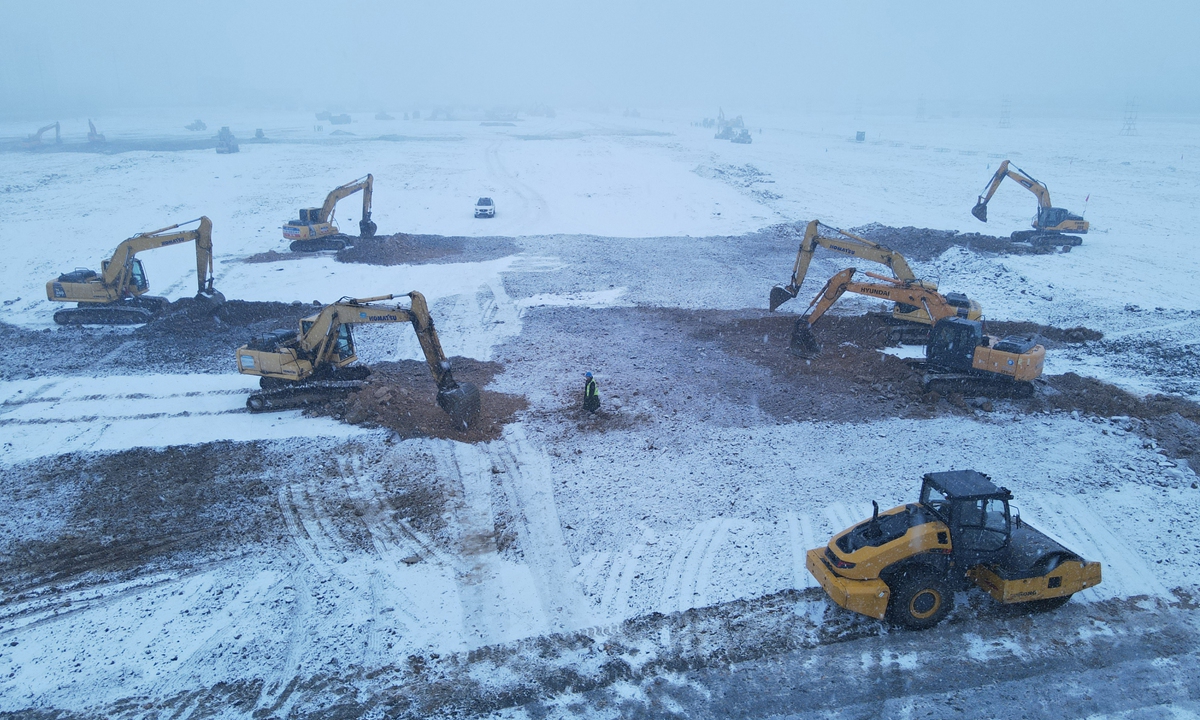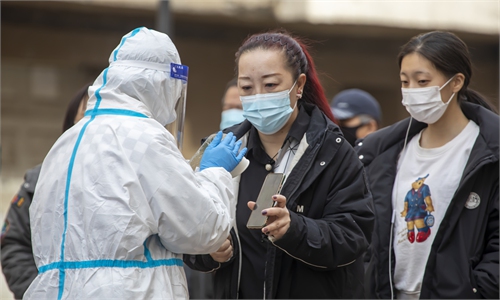Jilin records over 1,000 daily infections two days in a row, worst local outbreak since Wuhan

Makeshift hospitals are under construction in a district in Jilin city, Northeast China's Jilin Province on March 14, 2022. Photo: VCG
Northeast China's Jilin Province has witnessed over 1,000 daily infections for two days in a row, reaching a peak of daily numbers among Chinese mainland cities since the Wuhan outbreak in 2020. Experts predict that the number of infections in Jilin is likely to exceed 10,000 in the latest outbreak due to insufficient medical resources and previous poor responses, which can serve as a tough lesson for other areas of the country in dealing with the Omicron variant.
A sharp rise of more than 2,000 Omicron infections (confirmed cases and asymptomatic cases included) was registered on Sunday, with over 1,000 found on Monday, according to the Jilin provincial government. As of Monday, some 3,868 residents in the province had tested positive in their preliminary screening tests, local officials said.
Jin Dongyan, a biomedical professor at the University of Hong Kong, told the Global Times on Monday that the epidemic has been spreading stealthily for some time but the local government failed to detect it at the early stage, and the epidemic probably started in February.
According to an epidemiological survey published by local health authorities, most of the early cases in the city of Changchun and Jilin generally could be traced back to mid-to-late February, with many infected people having gone to hospitals or pharmacies for treatment before they were confirmed.
Observers noted that registration for certain drugs at pharmacies was not thoroughly implemented, and that was one of the reasons that the Jilin outbreak was not found earlier.
Two cluster infections in schools in Jilin made headlines in recent days, exposing the poor epidemic response measures that caused the wider spread of the virus.
Jilin's lessons reflect the severity of the epidemic situation with the fast spread of Omicron in China, and the importance of upgrading testing tools and prevention measures amid the new variants, Jin noted.
New tools such as rapid antigen tests are being utilized, which can generate results faster than current mass testing, Jin said.
The province is setting up mobile cabin hospitals in the worst-hit cities including Changchun and Jilin City to expand its ability to accommodate silent carriers. Some 35 designated hospitals with over 18,000 beds have been arranged for symptomatic patients.
All middle and primary schools will move their classes online, while carrying out thorough disinfection on-site. Boarding schools will conduct multiple rounds of COVID-19 screening before students are allowed to be sent home. Colleges will implement strict closed-loop management, local authorities said.
On Monday, cross-provincial and cross-city personnel movements were halted in Jilin to reduce the risk of epidemic spillovers.
The outbreak in Jilin can be regarded as a preview of how most Chinese cities will cope with the Omicron variant, which has replaced Delta as the dominant variant in China. It also serves as a tough lesson for other regions, experts said.
At least three officials from Jilin Province have been sacked due to their defective emergency response, including Wang Lu, the mayor and deputy Party chief of Jilin city, Li Xin, the head of Jiutai district of Changchun, and Gao Yutang, director of the Changchun Municipal Health Commission.



